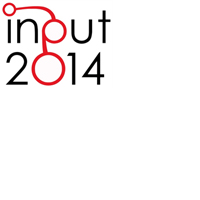Virtual Power Plant. Environmental Technology Management Tools of The Settlement Processes
Abstract
The Distributed Energy Resource (DER) systems represent a possible option for the implementation of the Low Carbon Cities development scenario, consistently with EU orientations. Many surveys, especially of engineering and information technology origin, are contributing to DER systems spread through testing the Virtual Power Plan (VVP): a technological system aimed at synchronously managing the information and energy fluxes, and able to have an effect on the urban metabolism balance and on the energy chain organizational model. In the event of a wider VVP spread, consequences for the urban structure social and technical conversion process might be envisioned. Such systems gain importance in terms of starting urban renewal processes, introducing new rules for the local energy and environmental infrastructures. In this way, it is envisioned the need for a deeper comprehension of the VVP innovative functionalities, this comprehension being significant for all the branches of knowledge which are interested in developing methods and tools for the Environmental Technology Management and Planning of the settlement processes. The author, who is interested in producing and organizing an energy, distributed, renewable and interactive model, shows, through a critical analysis of the Electricity Networks Europe program study cases, the operating potential of the new system, emphasizing the consequences on the settlement process development, thus providing a first definition of the strategic features for the VVP technical and social implementation.Downloads
References
Asmus P. (2010), “Microgrids. Virtual Power Plants and Our Distributed Energy Future”, The Electricity Journal, 23(10), 72-82.
Chourabi, H., Walker, S., Gil-Garcia, J.R. (2012), “Understanding Smart Cities: An Integrative Framework”. Paper presented at the 45th International Conference on System Science. Held in Wailea, Hawaii: January.
Commoner, B. (2003), “Una valutazione del progresso ambientale: la ragione del fallimento”. In: Molesti R. (ed.), Economia dell’ambiente e bioeconomia, Milano, Franco Angeli, 81-94.
European Commission (2009), A European Strategic Energy Technology Plan (set-plan) 'towards a low carbon future', Communication from the Commission to the Council, the European Parliament, the European economic and social committee and the committee of the regions, Brussels.
European Commission (2007), European Technology Platform SmartGrids. Strategic Research Agenda for Europe’s Electricity Networks of the Future, Directorate-General for Research, Cooperation I Energy, Brussels.
Farhangi, H. (2010), “The path of the smart grid”, Power and Energy Magazine, 8(1), 18-28.
Hughes, T. (1987), “The Evolution of Large Technological Systems”. In Bijker W.E., Hughes T., Pinch T. (eds.), The Social Construction of Technological Systems, Cambridge, MIT Press, 1-82.
Iov, F., Blaabjerg, F., Clare, J., Wheeler, P., Rufer, A., Hyde, A. (2009), “UNIFLEX-PM - A Key-Enabling Technology for Future European Electricity Networks”, European Power Electronics and Drives Association Journal, 19(4), 6-16.
Kieny, C., Berseneff, B., Hadjsaid, N., Besanger, Y. (2009), “On the concept and the interest of virtual power plant: Some results from the European project Fenix”. Paper presented at the Power & Energy Society General Meeting. Held in Calgary, CAN: July.
Lasseter, R.H., (2002), “Microgrid”. Paper presented at the Power Engineering Society Winter Meeting. Held in New York, USA: January.
Maldonado, T. (1970), La speranza progettuale. Torino, Einaudi.
Maldonado, T. (1997), Critica della ragione informatica. Milano, Feltrinelli.
McArthur, S.D.J., Davidson, E.M., Catterson, V.M., Dimeas, A.L. (2007), “Multi-Agent Systems for Power Engineering Applications—Part I: Concepts, Approaches, and Technical Challenges”, Journal of Power Systems, 22(4), 1743-1752.
Naphade, M., Banavar, G., Harrison, C., Paraszczak, J. (2011), “Smarter Cities and Their Innovation Challenges”, Computer, 44(6), 32-39.
Rifkin, J., (2002), Economia dell’idrogeno. La creazione del Worldwide Energy Web e la redistribuzione del potere sulla terra, Milano, Arnoldo Mondadori Editore.
Sibilla, M. (2012), “Organization and implementation of Local Micro Networks”. Paper presented at the 2nd Edition of inhabiting the future, Naples, Italy, December.
Winer, N. (1950), The Human Use of Human Beings. Cambridge, The Riverside Press.
Zeleny, M. (1985), “La gestione a tecnologia superiore e la gestione della tecnologia superiore”. In Bocchi G., Ceruti M. (eds.), La sfida della complessità, Roma, Feltrinelli, 377-389.

Copyright (c) 2014 Tema. Journal of Land Use, Mobility and Environment

This work is licensed under a Creative Commons Attribution 4.0 International License.
Authors who publish in this journal agree to the following:
1. Authors retain the rights to their work and give in to the journal the right of first publication of the work simultaneously licensed under a Creative Commons License - Attribution that allows others to share the work indicating the authorship and the initial publication in this journal.
2. Authors can adhere to other agreements of non-exclusive license for the distribution of the published version of the work (ex. To deposit it in an institutional repository or to publish it in a monography), provided to indicate that the document was first published in this journal.
3. Authors can distribute their work online (ex. In institutional repositories or in their website) prior to and during the submission process, as it can lead to productive exchanges and it can increase the quotations of the published work (See The Effect of Open Access)
